Queen’s Self-Regulating Tube
Ref. B7
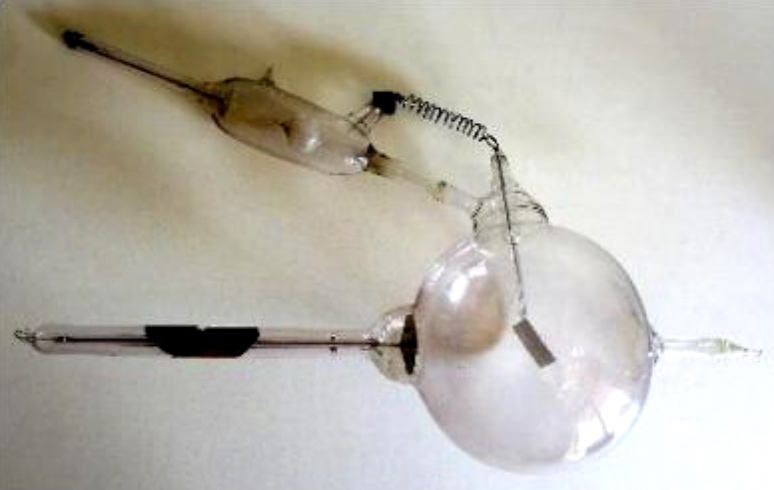
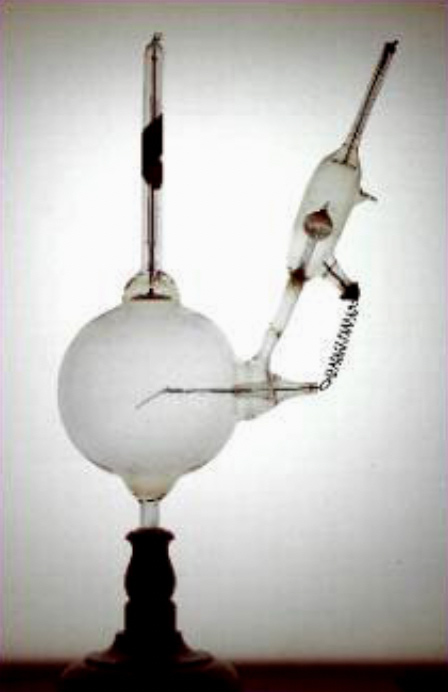
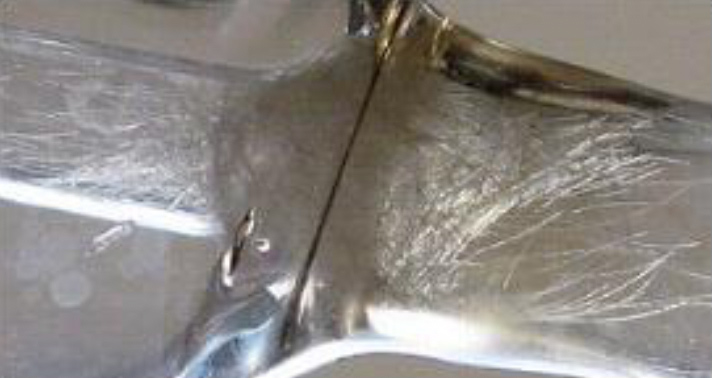
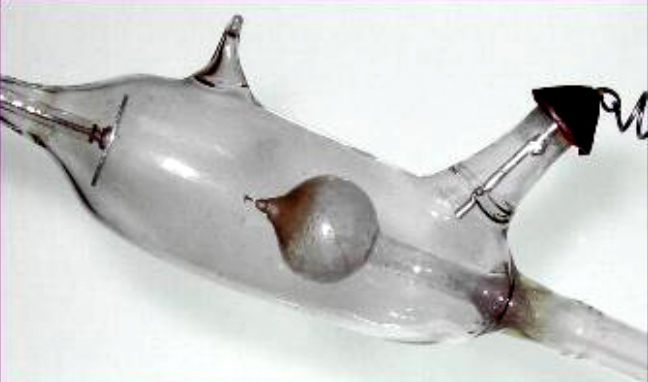
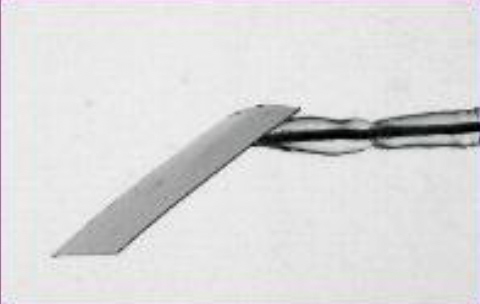
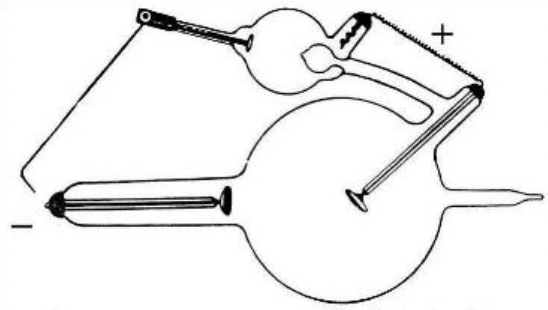
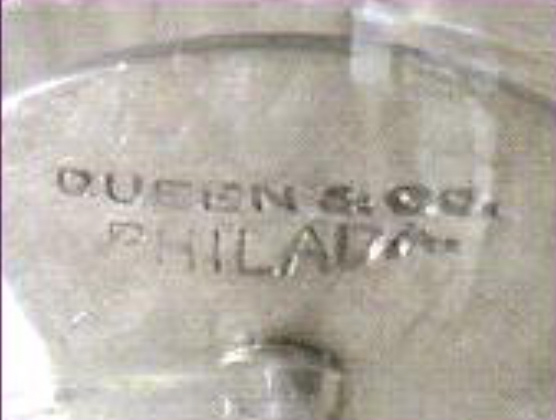
This is an early two-electrode tube, 13”(32cms) long, 4”(10cms) bulb and thin rectangular platinum anti-cathode, made by Queen & Co, Philadelphia (etched on the back of the concave aluminium cathode). It dates to the last years of the 19th Century, and is equipped with an automatic regulation device patented by Henry Lyman Sayen on Nov.23, 1897.
This very early, peculiar and ingenious regulation device consists of a secondary lateral cylindrical or oval tube, working in parallel with, and isolated from, the main tube. This secondary tube has its own flat aluminium cathode and small rod anode, and contains at its base a pointed-tip small glass bulb, with some potash content, communicating with the cavity of the main tube through a narrow neck stuffed with some white hair-like material (asbestos?).
The faded sticker on the cathode side arm of the tube reads “1395” printed in red, corresponding probably to a serial number. Note the independent vacuum nozzle of each of the main tube and the regulation device. Note also, in the main tube, the relatively low target angle, of about 30 degrees, unlike the usual 45 degree angle in early X-ray tubes.
In their book, Practical Radiography (1898), p.63, A.W. Isenthal and H. Snowden Ward describe the function of this tube as follows :
“The latest and theoretically the most perfect design utilising the absorption principle is the one introduced by Messrs Queen and Co., of Philadelphia. Its essential peculiarity is the arrangement of an alternative discharge path in parallel with the tube, containing an adjustable spark gap. Whenever the vacuum in the main tube rises beyond a certain preconcerted equivalent spark length, the discharge will pass across the gap, and the cathode rays from the auxiliary cathode will heat the potash bulb, driving off vapour into the main tube, which, however, is reabsorbed when the bulb has cooled down. According to the distance for which the spark gap is set the character of the radiation from the tube may be varied and may be kept automatically constant for any length of time, since every rise in the vacuum will automatically actuate the vapour discharge.”
Note, at the pointed tip of the small glass bulb inside the secondary tube, the presence of a tiny T-shaped platinum insert (left picture middle row), the role of which, when it gets hot during the normal operation of the tube, is to regulate also the vacuum in the secondary tube. According to the makers’ instructions, “it should never be allowed to get heated beyond dull red”.